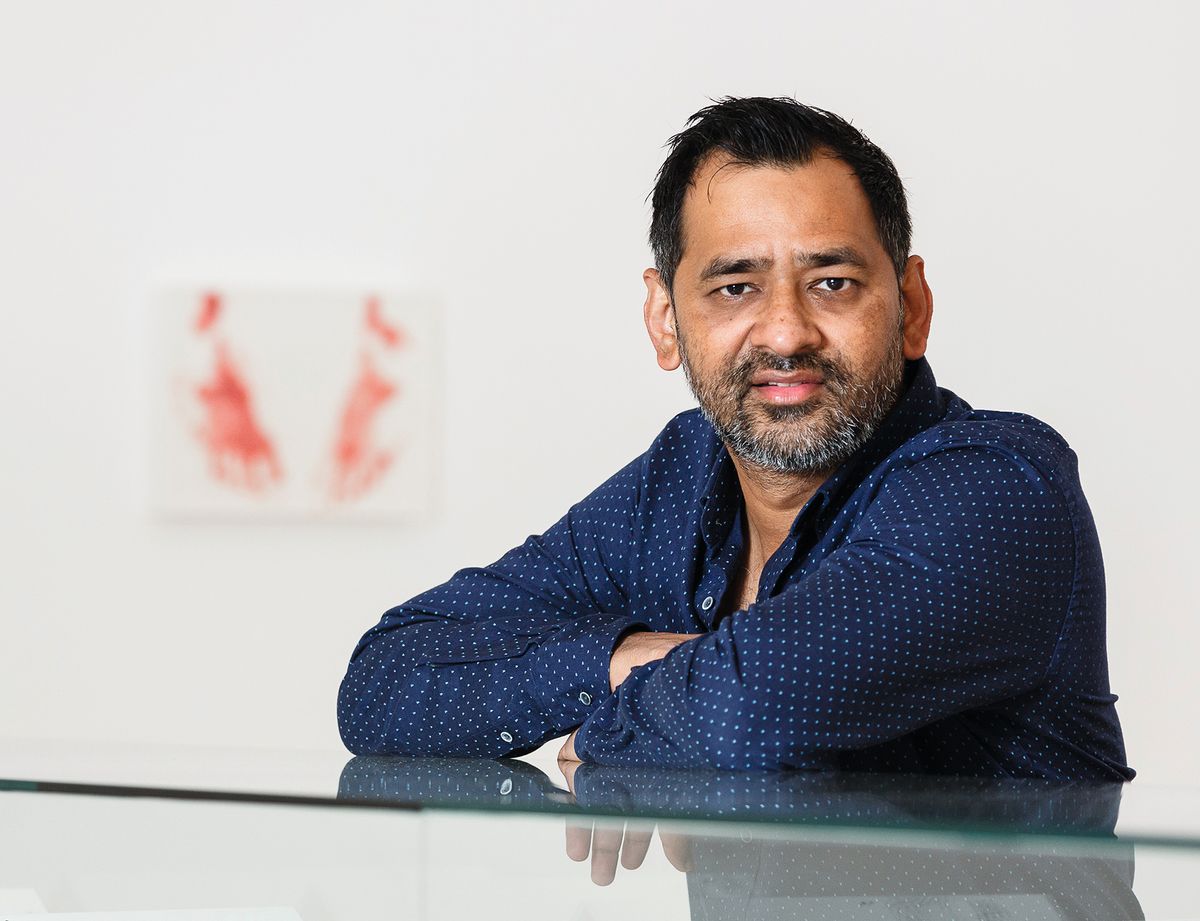Imran Qureshi’s solo exhibition at Concrete on Alserkal Avenue, curated by Nada Raza, reflects the artist’s exploration with scale, history and popular culture. Responding to the architectural challenges of the space, Qureshi juxtaposes large-scale works with intricate miniature paintings, videos and personal photographs.
A key feature is his latest experiment with the charpai, a traditional form of low, woven bed found across South Asia. The Lahore-based artist reimagines the woven panels as Islamic manuscript pages, incorporating existing metal structures at Concrete as a visual framework.
The show also includes a selection of photographs—snapshots captured by the artist over several years on his iPhone—as well as video works that document popular celebrations and daily life in Pakistan.
The Art Newspaper: Tell me about your upcoming exhibition at Concrete. How did it come about?
Imran Qureshi: I wanted to play with two ideas—large-scale works and very small-scale pieces—in the same height and space. When I did a show at the Barbican in London, people expected large-scale work, but I experimented with a miniature piece on the huge Curve wall. It was a surprise and it attracted more attention from viewers.
The show combines recent work and new commissions. Can you tell me about the departures you are making?
The exhibition introduces a medium I just started using in my practice. The first time I worked with it was for my solo show at COMO Museum in Lahore last year, and then at the Islamic Arts Biennale in Jeddah, where I used traditional charpai weaving. In this exhibition, I’m showing it in a new way. People can sit on some of the parts, but most of the panels extend vertically on the wall.
What inspired this orientation?
When I visited Concrete, I saw its raw, unfinished metallic structures, which were supposed to be covered with gypsum sheets. I loved the exposed grids and decided to use them as a visual layout. The work is also inspired by Islamic manuscripts. Concrete has four movable walls, and I saw the metal column in between the walls as the spine of a book. The walls on the left and right work as book pages for me, each with a frame and a border, like manuscripts.
Your work navigates between traditional and contemporary idioms. Can you talk about why you’ve chosen that path?
During my time as a student at NCA [the National College of Arts in Lahore], we had to master historical miniature techniques through reproductions. It’s a very disciplined practice. You have to focus on it, and you have to spend a certain number of hours every day to achieve results. The good thing is that by doing all this, the miniature comes into your self. I started looking at the world—looking at perspective, figures, their postures, landscape—in a totally different way. And when I started doing my own practice, I didn’t like the idea of forcefully bringing in new themes or a new way of working. If something happens organically, it has a certain depth to it. So now I talk about tradition because I was trained in that way.
But I was also very interested in politics, even as a child. In grade five or six, I used to read the headlines of the newspapers before I got ready for school. It was the time of the war between Russia and Afghanistan, and the Geneva Accords [that mediated the Soviet withdrawal].
Was politics always part of Mughal paintings?
Miniatures were very political. They were documenting their time period. Some were done by the order of the state or the emperor, but even then there was an artist behind the documentation, and you can see how their personal narratives enter into their given format or guidelines. There are many unusual things in miniatures.
We keep our colour in seashells, and use our palm as a palette. It’s like you actually feel the colourImran Qureshi
The physical discipline of miniature painting—how you sit, how you steady your hands—seems essential. Do you still practise that way?
Yes. When we sit on the floor, the body is more stable. Your hand is more stable, and you can sit for hours and your focus is more on your painting. You can see so many things closely with a certain posture. It’s very close to our way of living as well and to nature. We keep our colour in seashells, and use our palm as a palette. It’s like you actually feel the colour, how thick or thin it is, and how it is going to react on paper. We feel it first in our body.
You now teach miniatures at the NCA, and have done for more than 30 years.
I head the miniature painting department and also oversee student co-curricular activities, [including] two big yearly festivals where the students perform music and dance and decorate the whole campus. A lot of people said I am wasting my time with the festivals, that it takes away from my art practice. But I look at so many things around me, from the street and the market, and bring them into my work—for example the woven charpai. There are two videos in my show at Concrete, and they also come from popular things I see on the street. Now I realise that the boldness of always bringing in new mediums and playing with huge scale, with no fear, is because of my practice as a teacher with the student body, organising these festivals and thinking of new ideas every time.
• Vanishing Points: Imran Qureshi, Concrete, Alserkal Avenue, Dubai, 13-20 April


